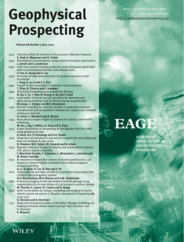
Full text loading...

The study examines the Egyptian Red Sea shelf and throws more light on the structural set‐up and tectonics controlling the general framework of the area and nature of the crust. Herein, an integrated study using gravity and magnetic data with the available seismic reflection lines and wells information was carried out along the offshore area. The Bouguer and reduced‐to‐pole aeromagnetic maps were processed and reinterpreted in terms of rifting and plate tectonics. The qualitative interpretation shows that the offshore area is characterized by positive gravity everywhere that extremely increases towards the centre of the graben, supporting the presence of an intrusive zone below the axial/main trough. The gravity data were confirmed by the presence of high magnetic amplitudes, magnetic linearity and several dipoles concentrated along the rift axis for at least 250 km. The lineament analysis indicates widespread of the Erythrean (Red Sea) trend that was offset/cut by transform faults in the NE direction (Aqaba). The tectonic model suggests the presence of one tensional (N65°E) and two compressional (N15°W, N30°W) phases of tectonism, resulted in six cycles of deformations, classified into three left lateral (N35°E, N15°E and N–S) and three right lateral (N85°W, N45°W and N60°W). The basement relief map reveals a rough basement surface that varies in depth between 1 and 5.6 km. It outlines several offshore basins, separated from each other by ridges. The models show that the basement consists of tilted fault blocks, which vary greatly in depth and composition and slopes generally to the west. They indicate that the coastal plain is underlain by acidic basement blocks (continental crust) with no igneous activity while suggesting elevated basic materials (oceanic crust) below the rift axis. The study suggests that northern Red Sea forms an early stage of seafloor spreading or at least moved past the late stage of continental rifting.

Article metrics loading...

Full text loading...
References


Data & Media loading...

